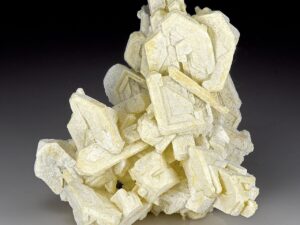Description
Mica: The Shimmering Mineral with Endless Applications
Mica, a group of sheet silicate minerals, is instantly recognizable by its perfect basal cleavage, allowing it to be easily split into thin, flexible, and often transparent sheets. This unique characteristic, along with its heat resistance, electrical insulation properties, and aesthetic appeal, has made mica an incredibly versatile mineral with a wide range of applications throughout history and in modern industries.
Composition and Types:
The term “mica” actually encompasses a group of closely related minerals with similar crystal structures and physical properties. These minerals are essentially hydrous potassium aluminum silicates, with varying amounts of other elements like magnesium, iron, and sodium. Some of the most common types of mica include:
- Muscovite: Also known as “white mica” or “isinglass,” muscovite is characterized by its silvery-white or colorless appearance. It’s highly prized for its excellent electrical insulation properties and high heat resistance.
- Biotite: Often referred to as “black mica,” biotite is typically dark brown to black in color due to the presence of iron and magnesium. While not as electrically insulating as muscovite, it’s more resistant to weathering.
- Phlogopite: This mica is typically brown to yellow in color and contains magnesium. It’s known for its high dielectric strength and is commonly used in electrical applications.
- Lepidolite: A lithium-rich mica, lepidolite ranges in color from lilac to pink. It’s a significant source of lithium and is also used in the production of heat-resistant glass.
Properties and Characteristics:
Beyond its signature cleavage, mica possesses a number of key properties that contribute to its usefulness:
- Excellent Cleavage: This is by far the most defining characteristic. It allows mica to be easily split into thin, flexible sheets.
- High Electrical Resistance: Making it an ideal insulator for electrical components.
- Heat Resistance: Mica can withstand high temperatures without significant degradation.
- Chemical Inertness: Resistant to attack by most acids, alkalis, and oils.
- Flexibility: Thin sheets of mica are remarkably flexible and resilient.
- Transparency (in Muscovite): Thin sheets of muscovite can be nearly transparent, allowing light to pass through.
- Lustre: Mica exhibits a pearly or vitreous lustre, giving it a shimmering appearance.
Applications Throughout History and Today:
Mica has been used for centuries, and its applications continue to evolve with technological advancements. Here are some notable examples:
- Ancient Civilizations: Used as window panes by the Romans, Greeks, and ancient Chinese.
- Traditional Medicine: Powdered mica has been used in traditional medicine systems for various purported health benefits.
- Decorative Arts: Used in paints, wallpapers, and textiles to add a shimmering effect.
- Electrical Insulation: A primary application, used in capacitors, transistors, and high-voltage equipment.
- Construction: Used as a filler in plasterboard, roofing felt, and asphalt for its heat-resistant and insulating properties.
- Cosmetics: Mica powder is a common ingredient in makeup to add a shimmering effect to foundations, eyeshadows, and other products.
- Automotive Industry: Used in friction materials for brakes and clutches.
- Electronics: In the manufacture of integrated circuits and other electronic components.
- Drilling Muds: Added to drilling fluids to help seal porous formations and reduce fluid loss.
Environmental Considerations:
The mining of mica, like any resource extraction activity, can have environmental impacts. Sustainable mining practices and responsible waste management are crucial to minimize these impacts. There are also concerns regarding the ethical sourcing of mica, particularly in regions where child labor is prevalent. Consumers and manufacturers are increasingly demanding transparency and ethical sourcing throughout the mica supply chain.
Conclusion:
Mica, with its unique combination of properties, continues to be a valuable and versatile mineral with a wide range of applications. From ancient windows to modern electronics, mica’s shimmering sheets have contributed to technological advancements and aesthetic beauty. As demand for mica continues to grow, it’s important to prioritize sustainable and ethical sourcing practices to ensure its responsible use for generations to come.










Reviews
There are no reviews yet.